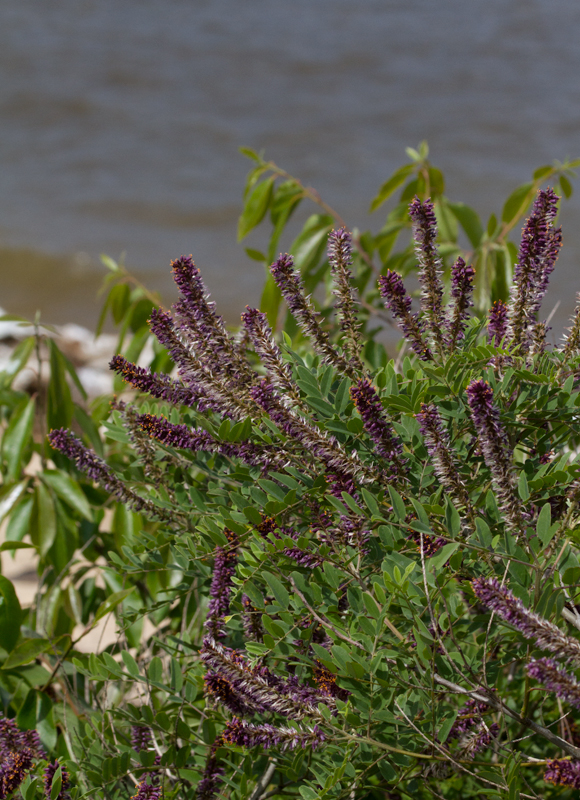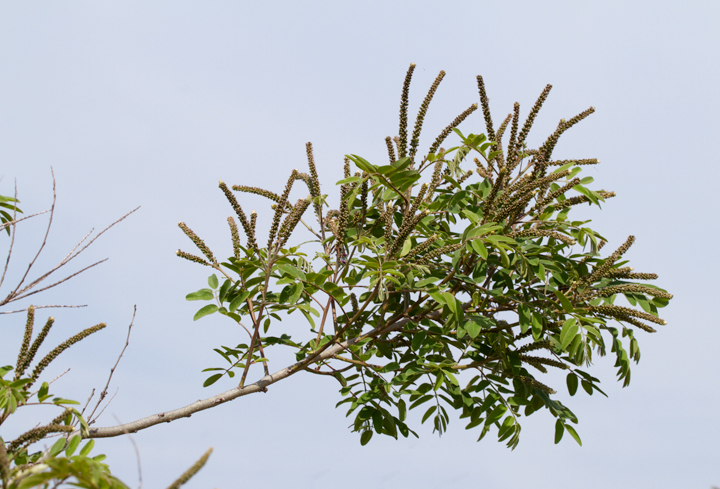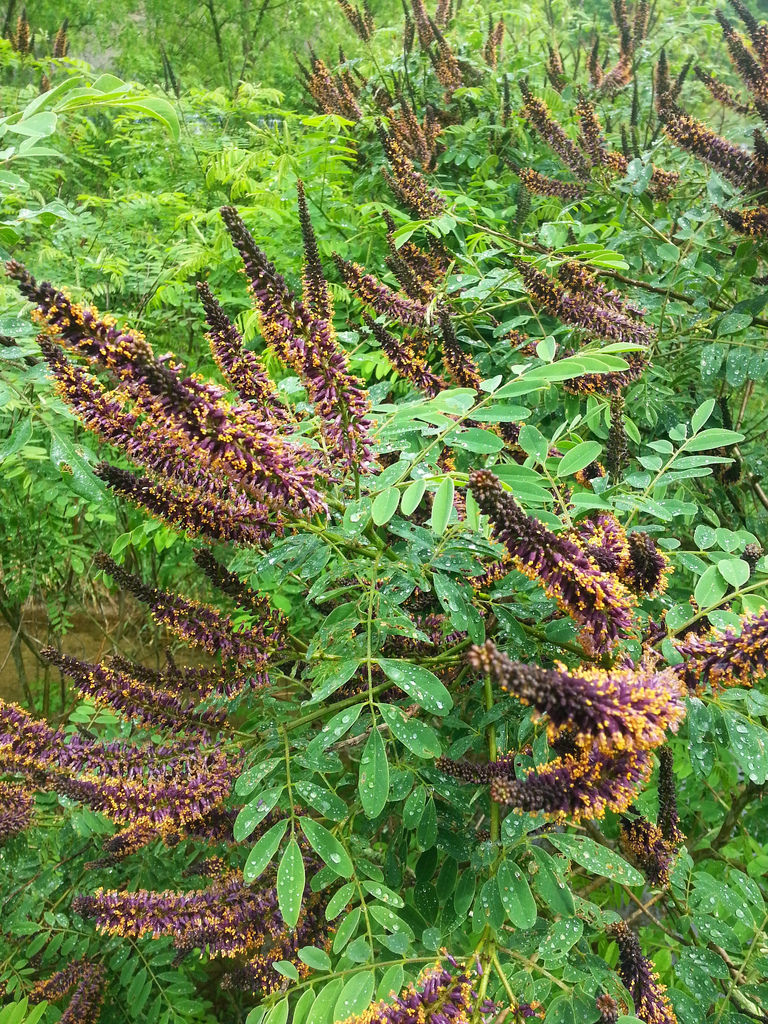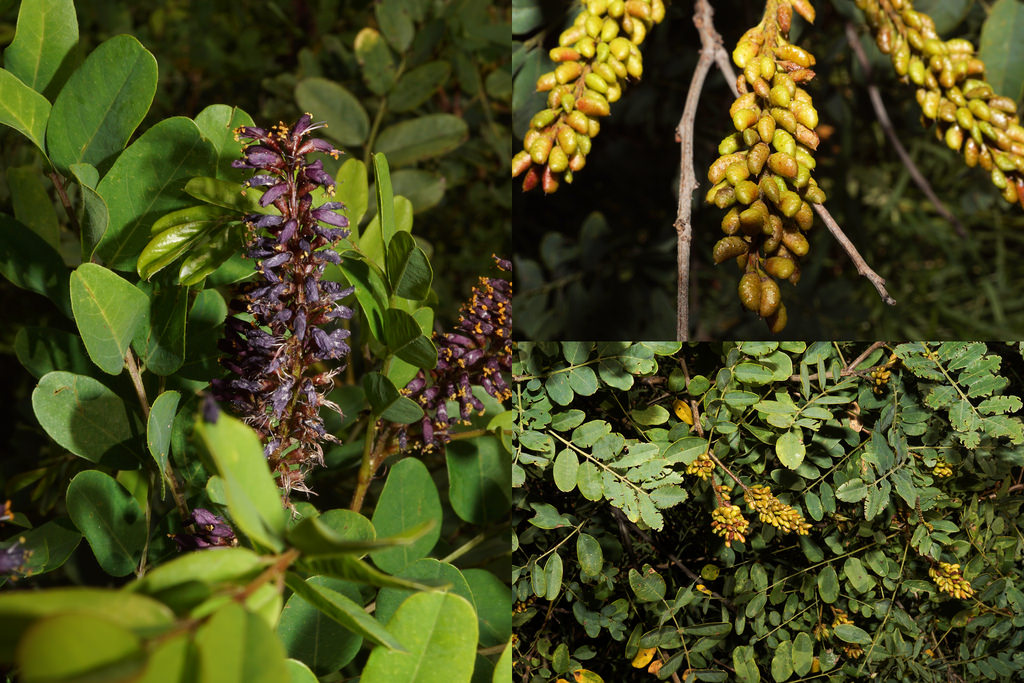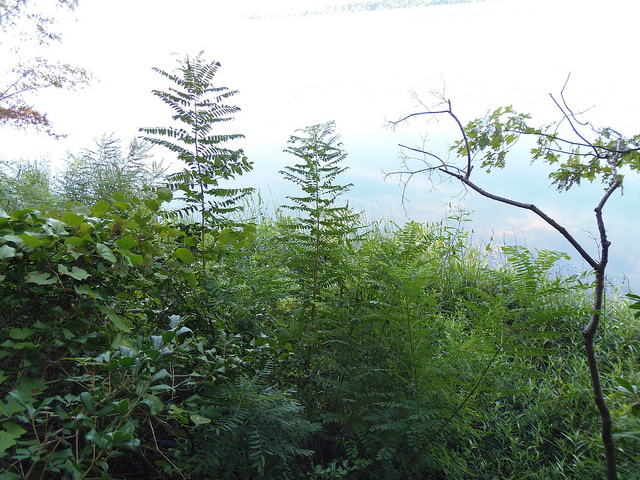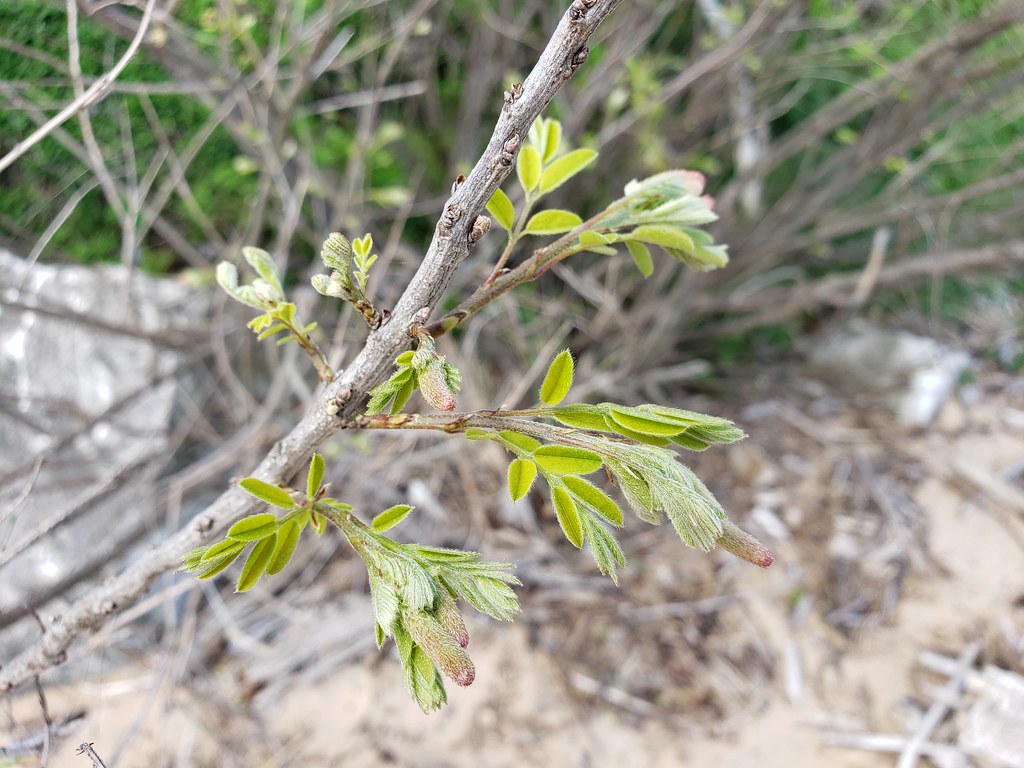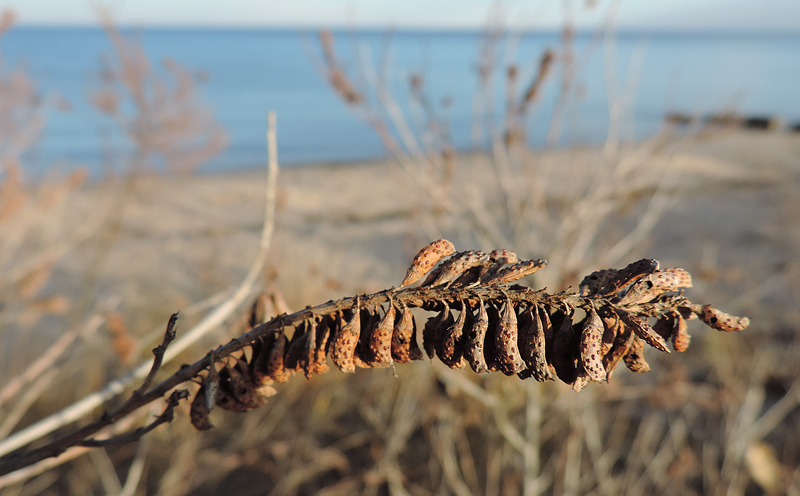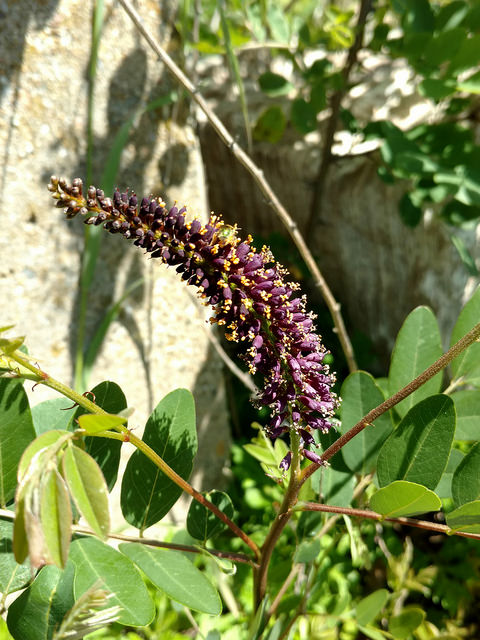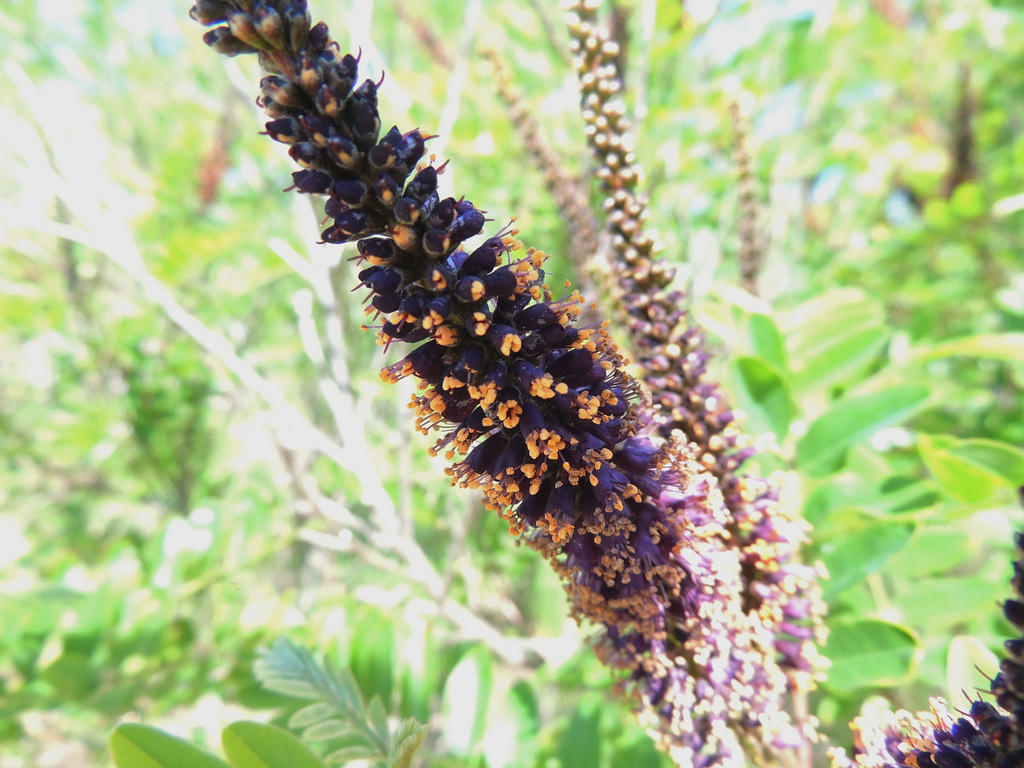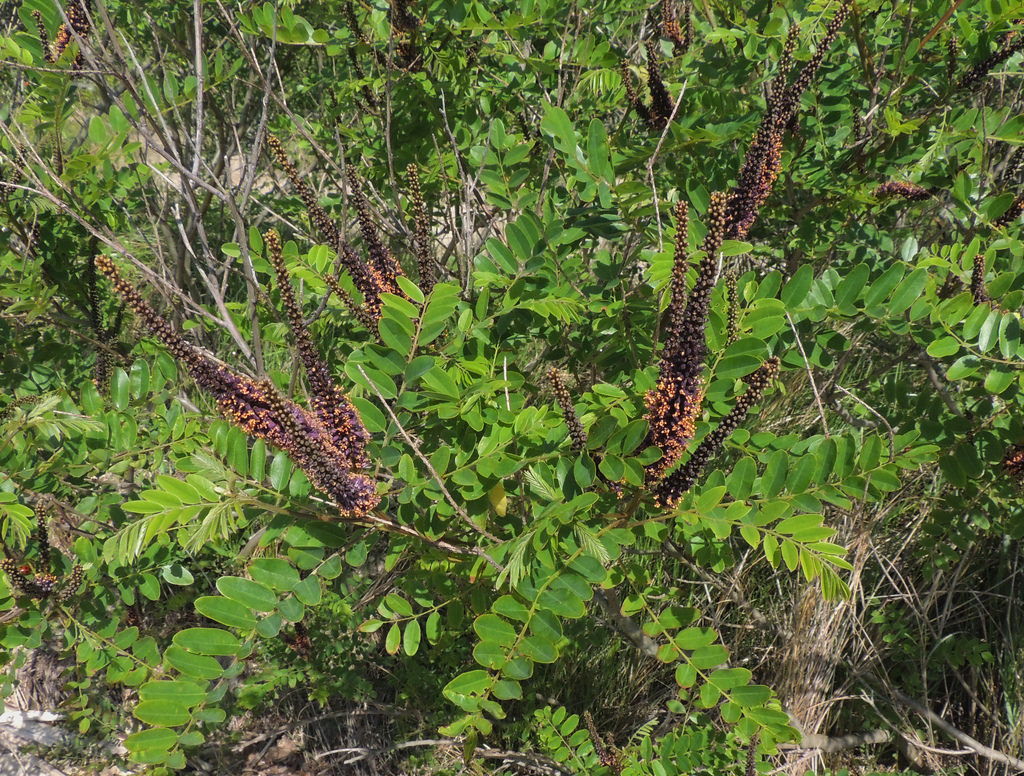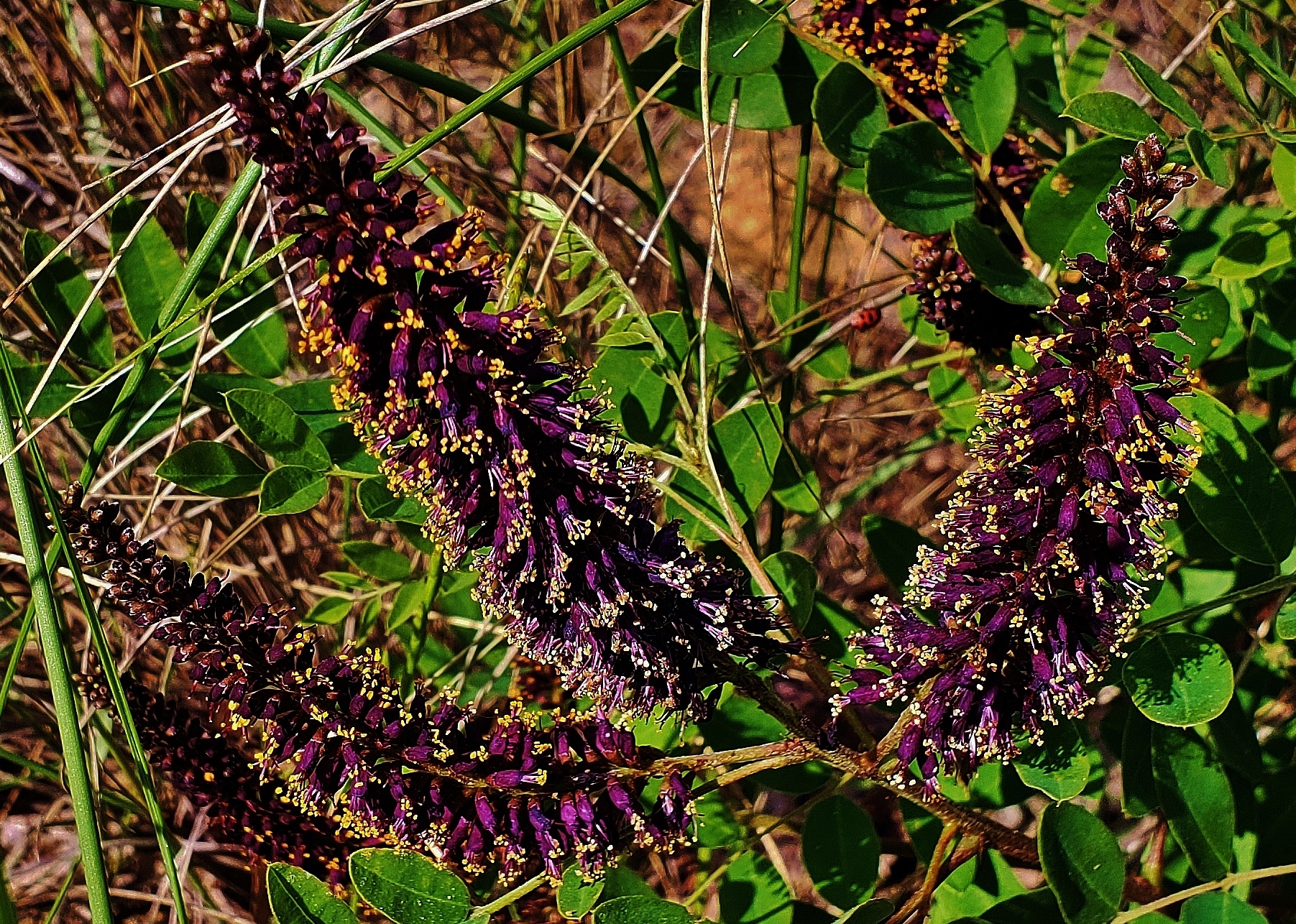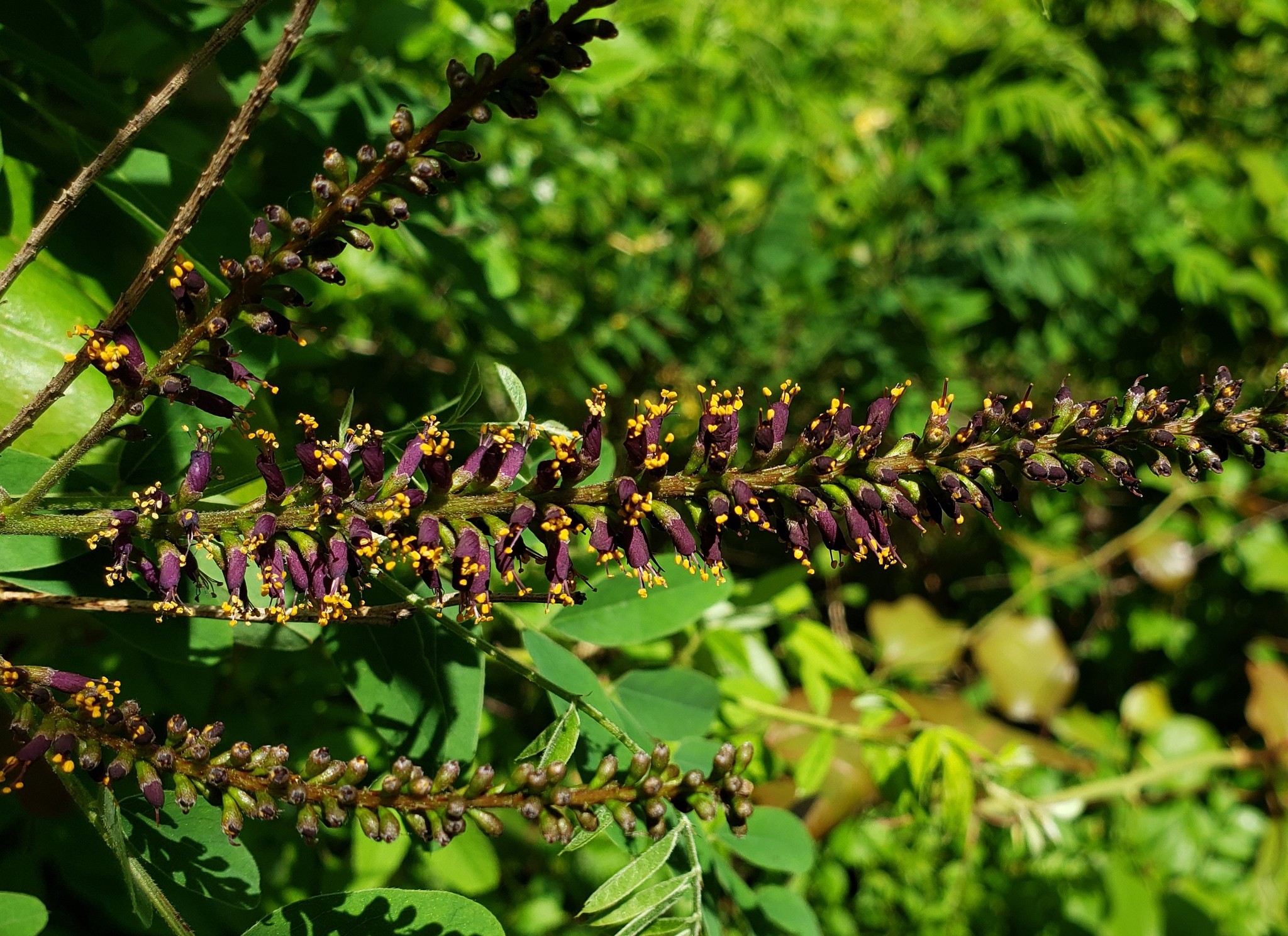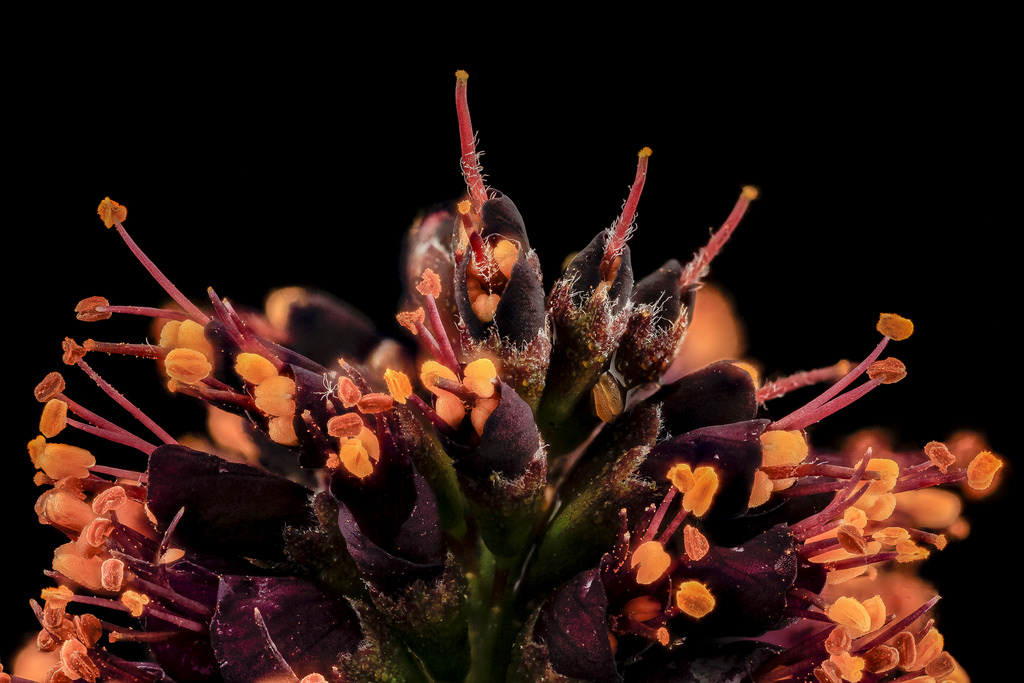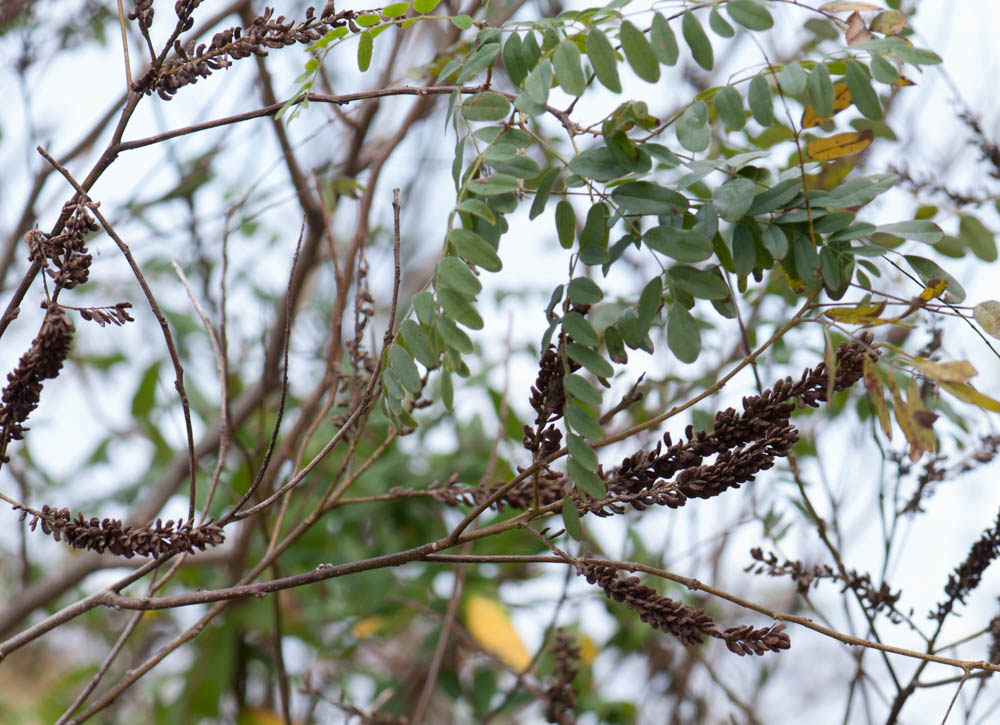Map Snapshot




















261 Records
Status
The False Indigo Bush is found throughout Maryland but may be absent from the Allegheny Plateau. Most common on the coastal plain but becomes increasingly rare to the west. Because of its use in horticulture, favored planting in hedge rows and use in windbreaks many populations may not be "wild". Wild False Indigo Bush seems to favor river and marsh edges and wet thickets with lots of sunlight.
Description
The long purple flowering spikes are diagnostic.
Relationships
Host plant for Four-lined Cabera Moth.
Seasonality Snapshot
Source: Wikipedia
| Amorpha fruticosa | |
|---|---|

| |
| Scientific classification | |
| Kingdom: | Plantae |
| Clade: | Tracheophytes |
| Clade: | Angiosperms |
| Clade: | Eudicots |
| Clade: | Rosids |
| Order: | Fabales |
| Family: | Fabaceae |
| Subfamily: | Faboideae |
| Genus: | Amorpha |
| Species: | A. fruticosa
|
| Binomial name | |
| Amorpha fruticosa | |
| Synonyms[2] | |
|
List
| |
Amorpha fruticosa is a species of flowering plant in the legume family Fabaceae, known by several common names, including desert false indigo, false indigo-bush, and bastard indigobush.[3] It is native to North America.
Description
[edit]Amorpha fruticosa is a perennial shrub.[4] It grows as a glandular, thornless shrub which can reach 5 or 6 m (16 or 20 ft) in height and spread to twice that in width. It is somewhat variable in morphology. The leaves are made up of many hairy, oval-shaped, spine-tipped leaflets. The inflorescence is a spike-shaped raceme of many flowers, each with a single purple petal and ten protruding stamens with yellow anthers. The fruit is a legume pod containing one or two seeds.[5]
Distribution and habitat
[edit]The native range extends through much of the United States and south into Mexico.[6] Its native habitats include stream and pond edges, open woods, roadsides and canyons.[4]
The species has escaped cultivation elsewhere and is present as an introduced species in Europe,[7] Asia, and other continents. It is often cultivated as an ornamental plant, and some wild populations may be descended from garden escapes.

Chemistry
[edit]6'-O-β-D-glucopyranosyl-12a-hydroxydalpanol, a rotenoid, can be found in the fruits of A. fruticosa.[8] Several members of the amorfrutin class of compounds have been isolated from the fruits.[9] Amorfrutins as well as other secondary metabolites from A. fruticosa have displayed favorable bioactivities counteracting diabetes and the metabolic syndrome.[10]
Ecology
[edit]It is a larval host to the clouded sulphur, gray hairstreak, hoary edge, Io moth, marine blue, silver-spotted skipper, and southern dogface.[11] The plentiful seeds are a food source for bobwhite quail. Both bees and butterflies use the flowers as a nectar source.[12]
Cultivars
[edit]- 'Albiflora', with white flowers
- 'Crispa', with curled leaves
- 'Lewisii', with narrow leaves
- 'Pendula', with arching branches, forming a dome shape
References
[edit]- ^ NatureServe (2024). "Amorpha fruticosa". Arlington, Virginia. Retrieved 12 April 2024.
- ^ "Amorpha fruticosa L." Plants of the World Online. Royal Botanic Gardens, Kew. Retrieved 12 April 2024.
- ^ "Amorpha fruticosa". Germplasm Resources Information Network. Agricultural Research Service, United States Department of Agriculture.
- ^ a b "Lady Bird Johnson Wildflower Center - The University of Texas at Austin". www.wildflower.org. Retrieved 2022-01-06.
- ^ "Western False Indigo, Amorpha fruticosa". calscape.org. Archived from the original on 2017-12-16.
- ^ "Amorpha fruticosa L. | Plants of the World Online | Kew Science". Plants of the World Online. Retrieved 2022-10-14.
- ^ DAISIE (2009). Handbook of Alien Species in Europe. Dordrecht: Springer. p. 399. ISBN 978-1-4020-8279-5.
- ^ Hak Ju Lee; Ha Young Kang; Cheol Hee Kim; Hyo Sung Kim; Min Chul Kwon; Sang Moo Kim; Il Shik Shin; Hyeon Yong Lee (2007). "Effect of new rotenoid glycoside from the fruits of Amorpha fruticosa LINNE on the growth of human immune cells". Cytotechnology. 52 (3): 219–226. doi:10.1007/s10616-006-9040-5. PMC 3449409. PMID 19002880.
- ^ Weidner, C.; De Groot, J. C.; Prasad, A.; Freiwald, A.; Quedenau, C.; Kliem, M.; Witzke, A.; Kodelja, V.; Han, C.-T.; Giegold, S.; Baumann, M.; Klebl, B.; Siems, K.; Muller-Kuhrt, L.; Schurmann, A.; Schuler, R.; Pfeiffer, A. F. H.; Schroeder, F. C.; Bussow, K.; Sauer, S. (2012). "Amorfrutins are potent antidiabetic dietary natural products" (PDF). Proceedings of the National Academy of Sciences. 109 (19): 7257–62. Bibcode:2012PNAS..109.7257W. doi:10.1073/pnas.1116971109. PMC 3358853. PMID 22509006.
- ^ Kozuharova, E; Matkowski, A; Woźniak, D; Simeonova, R; Naychov, Z; Malainer, C; Mocan, A; Nabavi, SM; Atanasov, AG (June 8, 2017). "Amorpha fruticosa - A Noxious Invasive Alien Plant in Europe or a Medicinal Plant against Metabolic Disease?". Frontiers in Pharmacology. 8: 333. doi:10.3389/fphar.2017.00333. PMC 5462938. PMID 28642702.
- ^ The Xerces Society (2016), Gardening for Butterflies: How You Can Attract and Protect Beautiful, Beneficial Insects, Timber Press.
- ^ Kurz, Don (2004). Shrubs and Woody Vines of Missouri (Second ed.). Conservation Commission of the State of Missouri. p. 48. ISBN 1-887247-44-0.
External links
[edit]![]() Media related to Amorpha fruticosa at Wikimedia Commons
Media related to Amorpha fruticosa at Wikimedia Commons
- Jepson Manual Treatment
- USDA Plants Profile
- "Amorpha fruticosa". Germplasm Resources Information Network. Agricultural Research Service, United States Department of Agriculture.
- Amorpha fruticosa L. Medicinal Plant Images Database (School of Chinese Medicine, Hong Kong Baptist University) (in Chinese) (in English)
